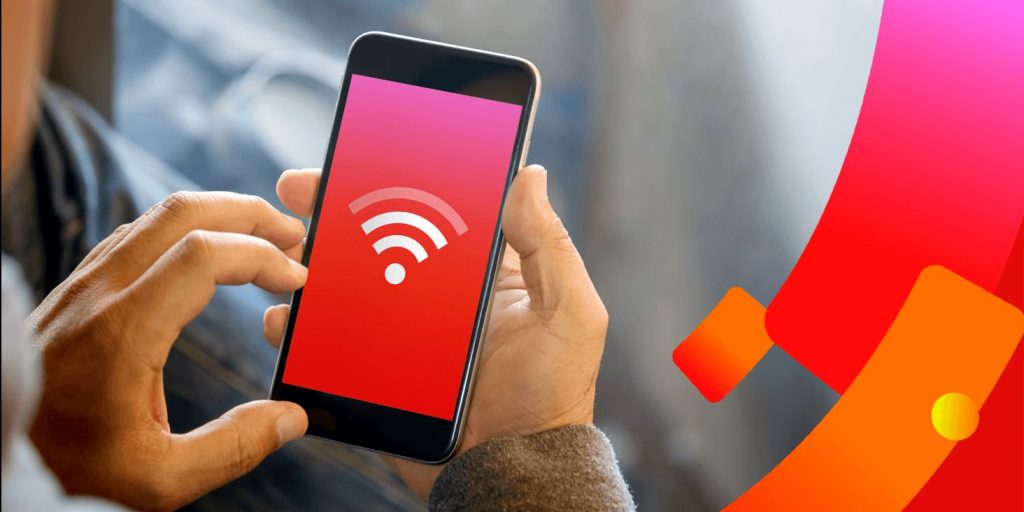The year is 2022, and wireless technology is at its peak. We can do so many things online that if you mentioned any of them a few decades ago, people would think that you lost all your marbles. This new technology allows us to stream videos, take courses, study, work, and expand all types of business, completely wirelessly.
The wireless signal gets to your device even when the router is not nearby. You can browse the internet even if the router is in an entirely different room. For that reason, we will elaborate on the topic of how does Wi-Fi signal travel.

How Does Wi-Fi Signal Travel?
The Wi-Fi network uses radio waves to transmit information between the router and your device. The entire operation is done via frequencies. Depending on the amount of data sent, two radio-wave frequencies can be used – 2.4 GHz and 5 GHz. Inside these two frequencies, there are smaller ones, called Wi-Fi channels, that enable wireless networks to communicate with our devices without any wires.
The Wi-Fi signal can be transmitted through radio waves in two main steps. The first is when the device’s wireless adapter translates the data into radio signals, and the second is when the router receives the signal, decodes it, and sends the information with the help of a physical Ethernet cable and connection.
If you are still unclear on what all of this means, we will go a little more in-depth on how Wi-Fi signal travel.
Wireless Signal
To prevent any interferences and high trafficking, the two wireless frequencies mentioned earlier are split into multiple channels. Sharing the information with these channels is where the computer magic happens. The first step is always done by the user. Accessing the internet on any device converts the information into binary code.
For example, when you clicked on our article – “How does Wi-Fi signal travel?” – your request was converted into a bunch of 1s and 0s. Wi-Fi can transform these 1s and 0s into wave frequencies with the Wi-Fi chip on your device. The operation of signal travel happens with the previously mentioned radio channels. The routers receive the data from the connected device and convert it back into binary code for the internet traffic to go as smoothly as possible.
The operation is repeated until your browsing session is determined. Something else worth mentioning is that this happens extremely fast. Most wireless routers work on 25 Mbps or megabits per second, which means that 54 million 0s and 1s are sent or received each second.
How does wireless signal travel through walls?
Three things can happen when an electromagnetic wave, including a wireless signal, strikes a specific surface. The signal can:
- Pass through (or what is also known as refraction);
- Get reflected (reflection);
- Get absorbed (absorption).
Typically, the following question is what makes objects retract, reflect, or absorb a particular wavelength of radiation? The answer lies in the composition of the object. The universe consists of atoms. The size of the atoms or the distance between them determines what the reaction will be when the WiFi signal tries to get through. The wireless signal can pass through building materials such as walls and doors, but the more obstacles between the router and the device, the weaker the connection will be.
Read more: How to Fix No Internet Connection

What Affects the Strength of the Wi-Fi Signal?
We understand your frustration if you are tired of lagging while trying to watch the new Netflix releases. With the rise of smart home devices, improving your Wi-Fi signal is of great importance. Therefore, despite elaborating on how does Wi-Fi signal travel, we wanted to give a little bit of information on the signal strength, which can fluctuate in particular spots in your home, and offer you solutions for improvement.
Building materials
The wireless signal strength can be affected by many factors. To begin, the house itself can affect the performance of the Wi-Fi. The signal suffers and can be greatly affected by wooden doors, drywall, bricks, metal, or concrete. These signal interruptions are out of your control, and you cannot change your home to get a better WiFi signal.
Let’s talk a little about the factors that you can actually control, such as the placement of your router. Placing the wireless router in the attic, basement, or the opposite side of the house may be the culprit of your network issues. If you are experiencing signal troubles, move the device to the center of your home.
Wireless channel
The wireless channel you are using on your router could also be the reason why you have a slow wireless signal. Specific channels are more prone to experience interruptions, so changing the router’s channel may be very helpful.
Device overload
Lastly, your wireless signal could be thinning because multiple devices are connected to it, and the bandwidth is clogged. The key to this issue is to be mindful of which devices you use the most and turn off the 4K streaming on the smart TV when no one is watching.
Also read: How Does a Wireless Router Work
How to Improve the Strength of the Wi-Fi Signal?
Particular devices or tasks require a specific amount of wireless signal. However, no one should settle for less than the highest potential of network connection. Our devices should function at their highest quality, not just be merely usable.
We want our laptops, smart TVs, and computers to function without any interruptions. To upgrade your online experience, you can improve the strength of your Wi-Fi signal by:
- Updating the firmware of the router
- Split the devices between multiple networks
- Use a mesh network or an extender
- Make the password strong, enhance the security, and prevent any unwanted devices from getting in
- Switch between Wi-Fi frequency bands
Conclusion
There you have it!
We are confident that you now know how does Wi-Fi signal travel and what you can do to improve your internet experience. A strong wireless connection is crucial for any online course or finishing a work task with a deadline.
If you are tired of loading pages and constantly seeing the buffering logo with the message “No Internet connection”, follow our guide and improve the strength of your wireless signal.
Good luck!